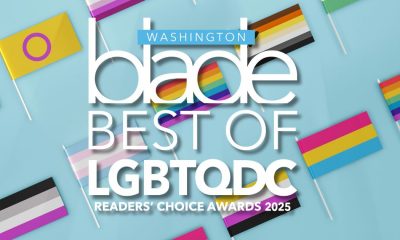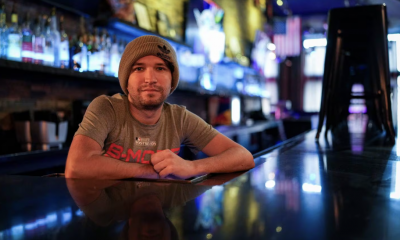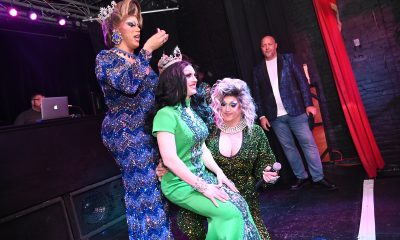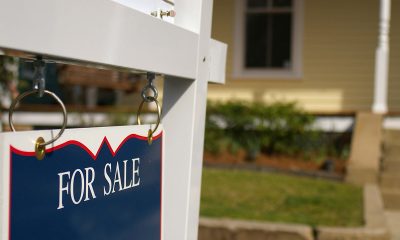Arts & Entertainment
The evolution of leather
Changes in ownership, location, technology contribute to morphing BDSM scene

There’s a lot of change in the air with the D.C. gay leather community. As Mid-Atlantic Leather Weekend is in town for its annual festivities, we decided to ask around and see if the changes are just coincidental, natural evolution of a maturing scene or indicators of a larger cultural shift of some type.
The bottom-line answer, not surprisingly, is that it depends whom you ask.
KEEP UP WITH EVERYTHING M.A.L. WITH OUR SPECIAL COVERAGE PAGE
But first, the particulars.

On Foursquare? Sync your M.A.L. weekend To-Do list with ours, and connect with the Blade to always be in the know.
• The Leather Rack, still gay-owned but under new management, has a new name. Now known as Adam & Eve, it’s still at 1723 Connecticut Ave., N.W. (location of the nearly 40-year-old business since 1991) but is a slightly different shop.
“We felt the name attracts a broader audience, not just gay guys into leather” current owner Russwin Francisco, who bought the business from James McGlade (who’d owned it since 1994), wrote in an e-mail. “We do love gay leather guys and we’ll support the leather community in any way we can. We simply want to ensure that other folks with other sexual fetishes feel as comfortable in our store regardless of gender, sexual orientation or identity. Consequently we are offering women’s fetish wear, toys and accessories along side our men’s [items].”
Francisco is gay, married to a man and has been in Washington for more than 30 years.
McGlade didn’t respond to requests for comment but said in a press release issued when the change became official in November that he was “grateful for our time here as the Leather Rack” and “we wish to thank you for your patronage and endorsement over the years.”
“Jim is a good friend,” Francisco says. “It was a natural transition.”
• As has been widely reported, the D.C. Eagle’s days at its current location at 639 New York Ave., N.W. location are numbered. The most recent official comment was that owners would be there through the end of March via an agreement with the developer of a high-rise office complex that will displace the Eagle and other businesses in the area.
Eagle owners and management staff are being tight-lipped on their plans. Repeated phone calls, e-mails and Facebook messages to Ted Clements, Peter Lloyd and Carl Domer went unacknowledged this week.
Eddie Ortiz, president of the D.C. Boys of Leather, says he sees Clements regularly and though he can’t offer anything official, he understands an announcement is imminent. The Boys have a monthly bar night at the Eagle, as do many of the local gay leather groups.
“I understand the owners do have a location identified, but they haven’t given me a location yet,” Ortiz says. “I think they’re going to announce it over MAL weekend. Ted is the one I talk to a lot.”
David Merrill, who’s gay and DJs the monthly fetish/gear party CODE, says it’s never wise to count the Eagle out.
“We’ve heard rumors of the Eagle’s imminent demise multiple times in the past and, of course, those rumors turned out to be greatly exaggerated,” Merrill says. “I’m certain they’ll open in a new location.”
• The Baltimore Eagle, however, hasn’t been as lucky. It closed last month at its 2022 N. Charles Street location and its fate remains uncertain. The estate of former owner Richard Richardson, who died suddenly in 2007 (he’d purchased it from Tom Kiple in 1995), had been running it in recent years. New owner Charles Parrish did not immediately respond to calls seeking comment.
In the meantime, many in the Baltimore gay leather community have moved over to Leon’s Leather Lounge, known casually as “the Triple L” at 870 Park Ave.
Rodney Burger, president of the ShipMates Club, which had called the Eagle “home” since the bar opened in 1991, said the last night it was open was memorable.
“It is my understanding that the new owner plans to turn it into office space,” he wrote in an e-mail. “How fitting that the last Saturday the bar was open was our ShipMates’ Daddy Christmas benefit. The bar was packed and we raised $3,000 for Moveable Feast. We closed the bar with a bang.”
He also said Triple L owner Ron Singer made “a nice offer” and they plan to continue meeting there.
“I just hope we can get in there to clear out our trophy case and banners,” Burger said later in a phone interview. “There’s the entire history of the Baltimore leather scene in there including banners from some clubs that haven’t existed for 30 years or more. I’m actually having nightmares about losing this stuff — we need to make sure we can get in there and get all that safely out. I hope it’s OK and doesn’t end up in a dumpster somewhere.”
Those active in the Baltimore leather scene say they’re hearing the Eagle could reopen elsewhere, but nothing definite is known.
“I’ve heard everything from three to five months, I’ve heard longer, the rumor mill is full of stuff,” Rik Newton-Treadway, known as “Hooker” in the leather community there, says.
MAL appears to continue thriving and local gay leather enthusiasts say it’s a major highlight of their year and remains popular with both locals and those who come from out of town.
“There’s always a huge percentage of local people at MAL,” Merrill says. He’ll be spinning his “deep house” and “progressive tribal” music at two special CODE parties at the Crucible this weekend. “I think most local guys into some part of the leather scene make it to at least one of the MAL events. There are so many things to do over the weekend — dance events, play events, times to socialize, the cocktails the Centaurs do — there’s a little something for everybody. That’s one of the great things about the leather community — it’s so diverse.”
Ortiz, whose Boys group is having its own free party/dance tonight at 10 in the Congressional Room at the Hyatt Regency on Capitol Hill (the sold-out host hotel), says he “can’t wait to get going and start dancing.” Though married to his partner of 14 years who’s not into the leather scene, Ortiz is in a slave/master relationship with a leather lover in Michigan whom he sees about once a month and who will be here this weekend for MAL.
“It’s such a fun time,” he says. “It’s great to see people you haven’t seen since last year and it gives us a chance to really hang out in our leather, do play scenes in a safe environment, be who we are, make new friends and also see some of the local people who don’t come out as much unless it’s for MAL.”
Ortiz, by the way, says the Boys club, which even has a couple female members, is about having a boy mindset.
“It’s how you identify in your heart,” he says. “It’s who you are on the inside. There’s no certain way it has to be, but it does tend to be more service oriented. You don’t have to be a complete bottom. Boys can top, but it’s about taking care of a dom or having someone be in charge of you and dominating the play scene.”
With trust and communication in his marriage, he says his other relationship is “working out great for us.”
As for the D.C. scene overall, some say it’s just natural evolution.
Woody says it runs much deeper than simply who owns a leather bar at any given time or where it might be located.
“The smartphone has brought with it a lot of degrading factors,” he says. “There are all these mobile apps now — Scruff, Growlr, Grindr — all these things we didn’t have before. Now I can find a trick a half a mile from me with my GPS-embedded tracker and there are people coming up with different websites all the time. … You can order up anything you want, so there are not as many people interested in romance anymore. Yes, there are still softies with good hearts who want relationships and certainly gay men have always had their hook-up side, but I think there’s a higher turnover ratio when everything’s online.”
Newton-Treadway, who says lots of guys from Baltimore come to D.C. for Leather Weekend (“Are you kidding? It’s practically in our backyard — it’s like a giant cheesecake for everybody who’s supposed to be on a diet.”), says the changing leather scene is much deeper and more complex than it may initially seem.
“I think there are aspects of the lifestyle that in a way are becoming more underground, less in your face,” he says. “I think the economy hasn’t helped. The Internet hasn’t helped. It’s many, many, many different things. I would say long gone are the days when a leather bar could count on the gay leather community to keep it open. With everything out there online, you don’t need to go out. Not long ago, there wasn’t any AOL, hell, we didn’t even have cell phones. You had to go out for dick. It didn’t come to you unless you were in the middle of the gay ghetto and sitting on your front porch. So there’s a lot of change occurring and a lot of contributing factors. And even when you do go out to the bars, everybody’s got their nose in their phone. They might even be texting to someone who’s right there in the bar, but they won’t go over and talk to them.”
But the bar scene in the leather world is far from dead. Jacob Pring, who organizes CODE and the XXX parties at Green Lantern and the Crucible, says he sees lots of younger guys coming to his events and gets anywhere from 100 to 150 guys to an average event.
“There’s always new people coming in,” Pring says. “People bring their friends. It’s fun. No attitude, no drama.”
Ortiz says he’s not so sure it’s changing as much as everybody says.
“I still go out,” he says. “I don’t just sit at home online all the time. I know lots of people who go out and support the clubs.”
Merrill says it is changing but it’s futile to pine for the past.
“Every community changes over time,” he says. “It’s not gonna be 1975 forever. I don’t know what things will look like in another 10 years, but I’m looking forward to finding out.”
a&e features
Local, last-minute holiday gift ideas
Celebrate the season while supporting area businesses
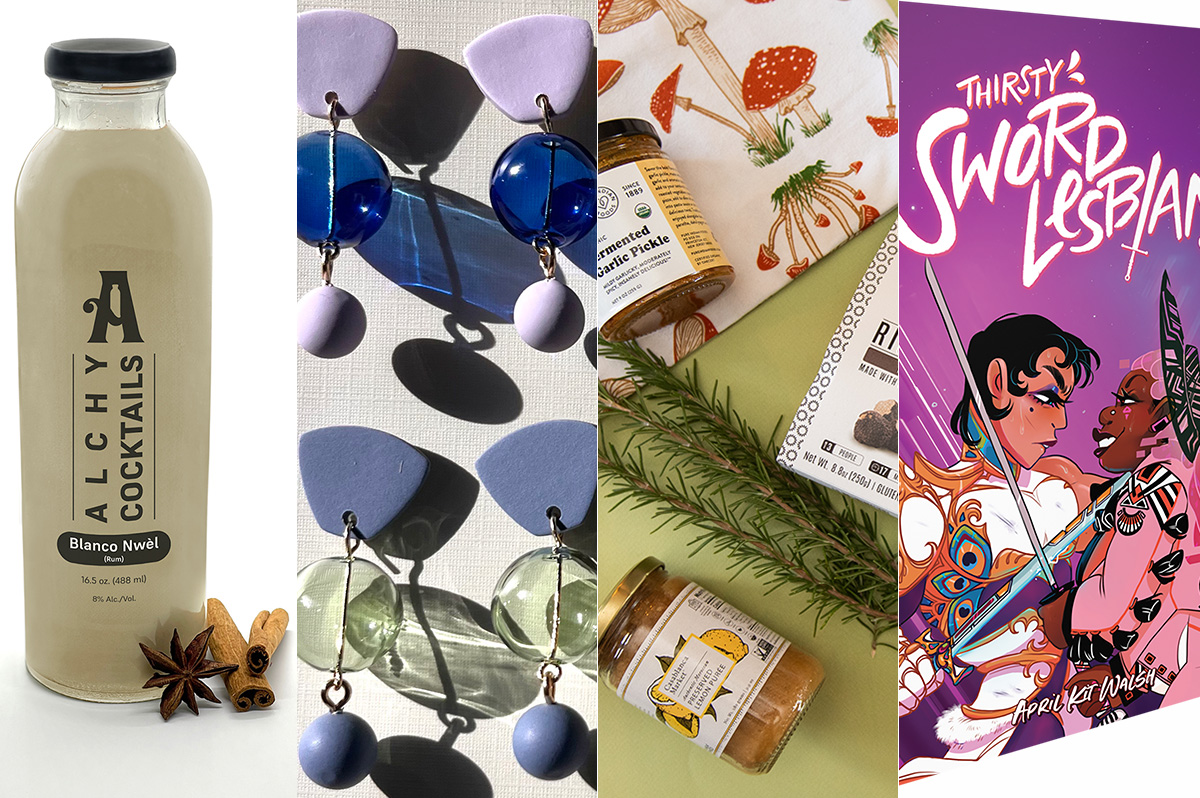
The DowntownDC Holiday Market is bustling. Union Station is decked out with its annual Christmas tree. Washingtonians have wrapped their houses and apartment balconies with festive lights and holiday decorations. The holiday season is here. And with stockings to fill and empty space under the tree, Washington’s local shops and artists have plenty to offer.
Show your LGBTQ and D.C. pride with the Washington Blade’s annual holiday gift guide.
To embrace the holiday buzz: The Blanco Nwèl cocktail from Alchy Cocktails. This Caribbean eggnog is one of Alchy Cocktail’s seasonal holiday cocktails. The flavor profile is similar to coquito, a traditional Puerto Rican Christmas drink with a coconut base. As a queer and Caribbean-owned business, Alchy Cocktails has been based out of Washington since 2021. Blanco Nwèl is available in both cocktail ($24) and mocktail ($12) online and at a variety of holiday markets, including the Tingey Plaza Holiday Market, the Flea Market at Eastern Market, Union Station’s Main Hall Holiday Market, and more. ($24)
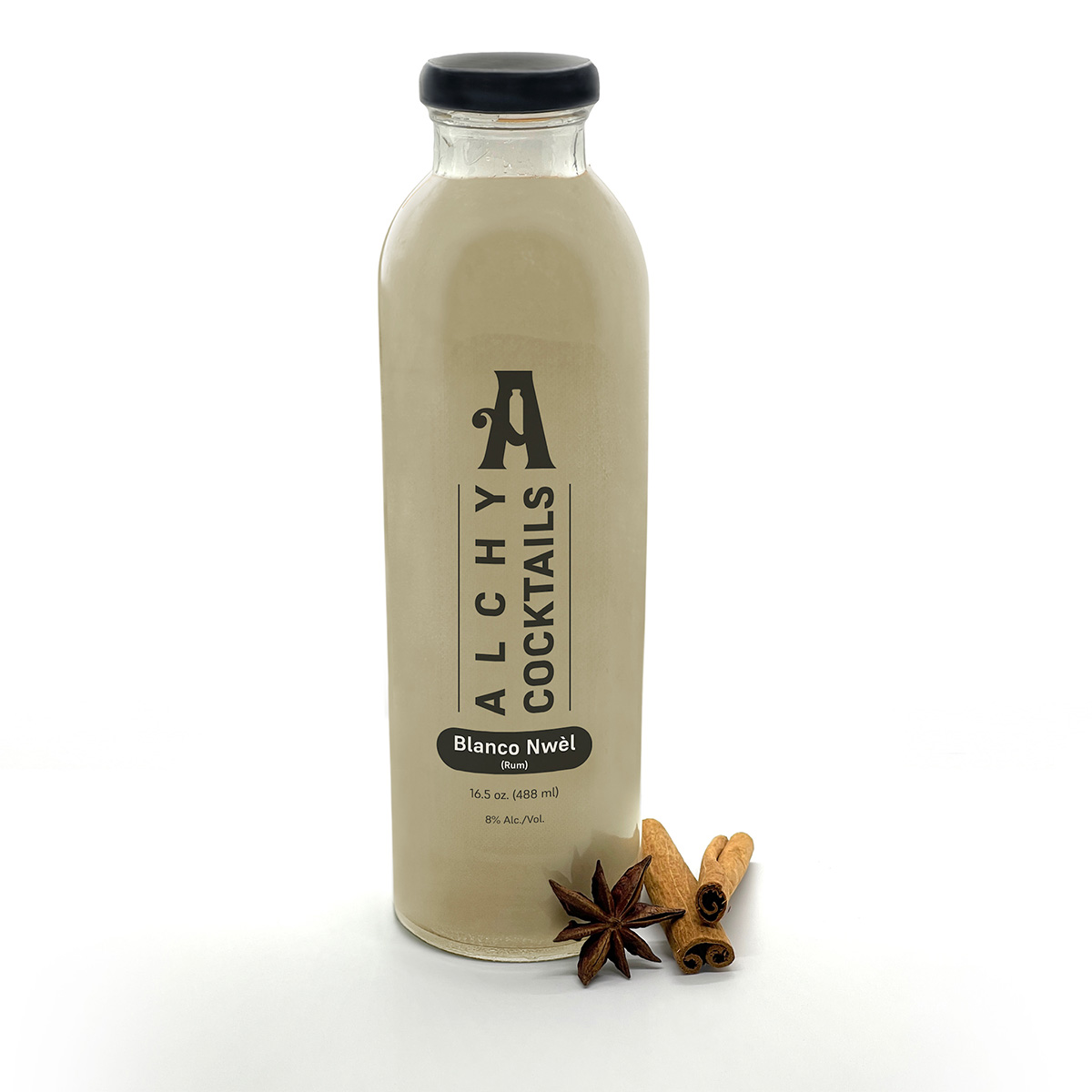
A spicy bite: Gordy’s Cajun Okra from Salt and Sundry. These spicy, tangy pickles pull on Southern Cajun-style flavors, packing a punch with paprika, cayenne, and more. Gordy’s is an LGBTQ-owned and Washington-based brand, making this gift an opportunity to support a local LGBTQ business straight from the jar. This pantry staple is available on Salt & Sundry’s website and at its locations in Union Market, Logan Circle, and its Georgetown holiday pop-up store. ($14)
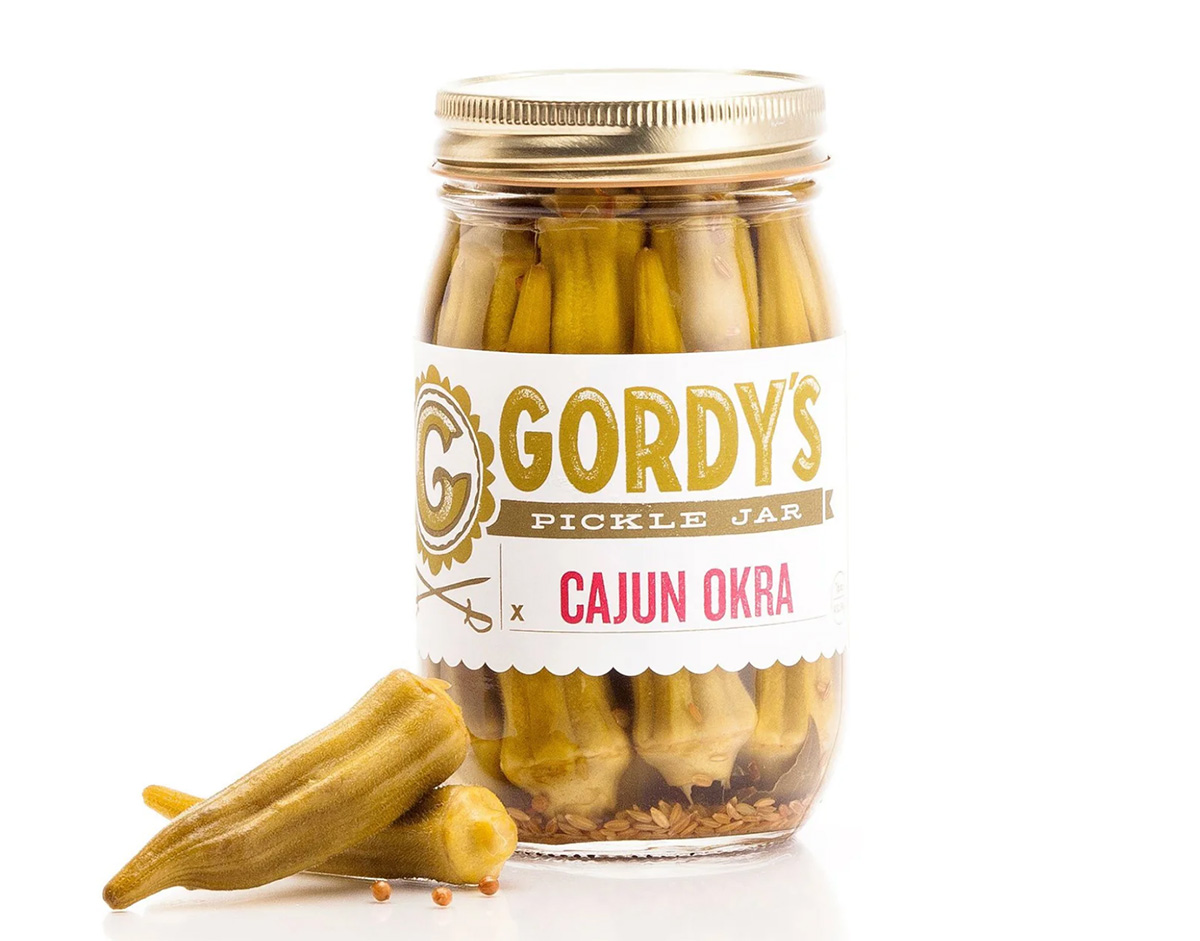

To celebrate Washington pride: The DC Landmark Tote Bag from The Neighborgoods. Native Washingtonians, visitors, friends and family alike will find something to love about this Washington-themed tote bag. Food trucks, the 9:30 Club, the Metro logo and pandas from the National Zoo are just some of the city’s landmarks depicted across the tote in a red, white, and blue color palette. The tote is a part of the DC Landmarks collection, which donates 10 percent of its sales to the American Civil Liberties Union. The Neighborgoods itself is a local, woman-owned business built out of a passion for screen-printing in 2013. The 100 percent cotton canvas tote is for sale online or at the DowntownDC Holiday Market. ($22)
To give friends and family their flowers: The Flowers Bandana from All Very Goods. This 100 percent cotton bandana was designed in Washington and hand printed in India. Its uniqueness comes in being covered with the faces of Black women, representing a “love letter to all women but especially Black women,” according to All Very Goods. The Black woman-owned and operated business, based out of Northwest Washington, has a mission to celebrate diversity and representation through its products. The bandana intends to give Black women their “flowers.” The Flowers bandana is available for purchase online. ($24)
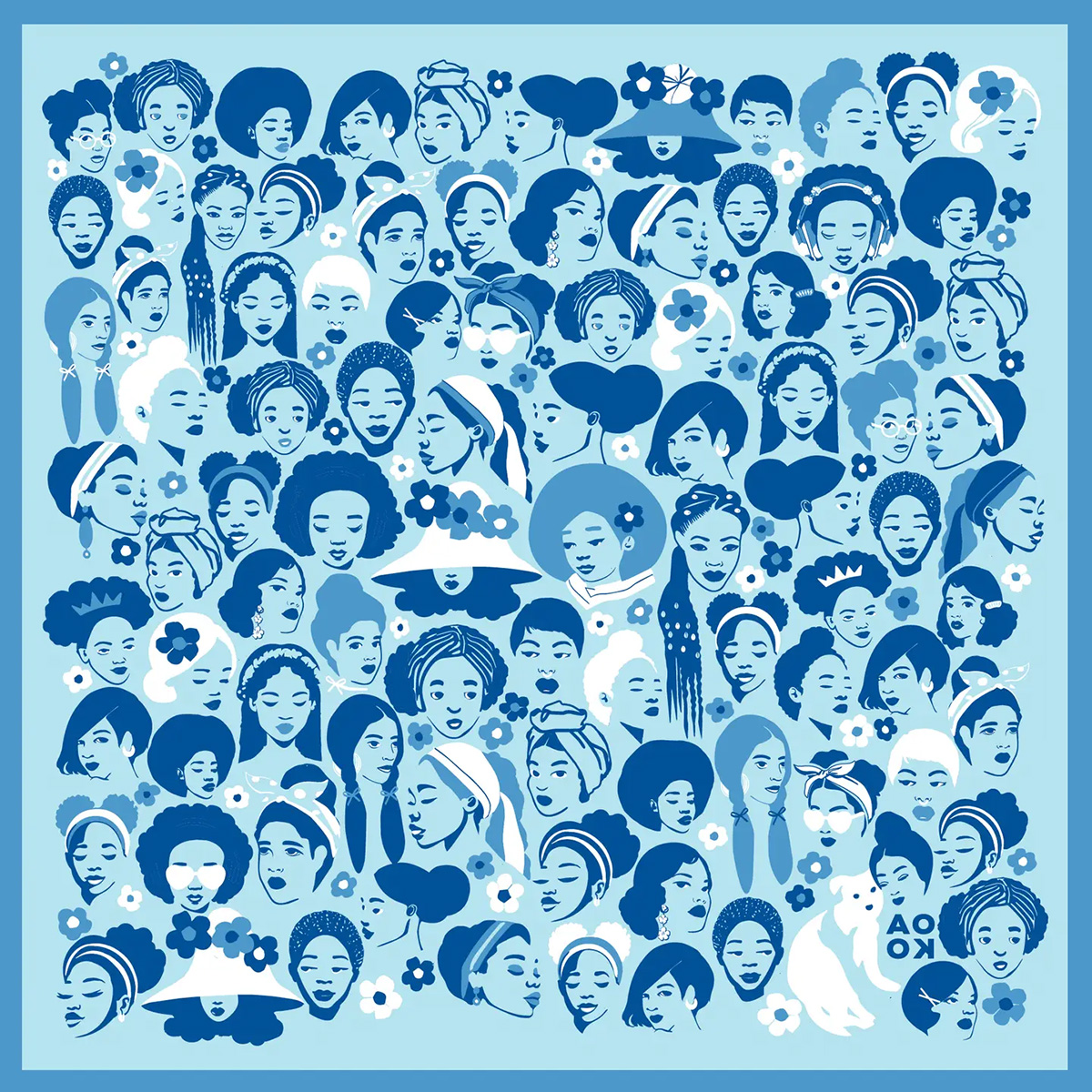
To unlock culinary creativity: The Curious Chef Gift Collection from Each Peach Market. This customizable collection of kitchen oddities — ranging from tinned fish to chili oil — is a quirky gift for the most inventive chefs. The collection is available in a Standard Santa, Extra Goodies and Super Holiday Size for up to $165. The Washington-based market, founded in 2013, permits customers to make the collection special by specifying what unique ingredients are packaged, including products made by local or LGBTQ brands. Each Peach Market offers assembly and pick up in-person at its Mount Pleasant shop and also offers local delivery and nationwide shipping via its website. ($85)
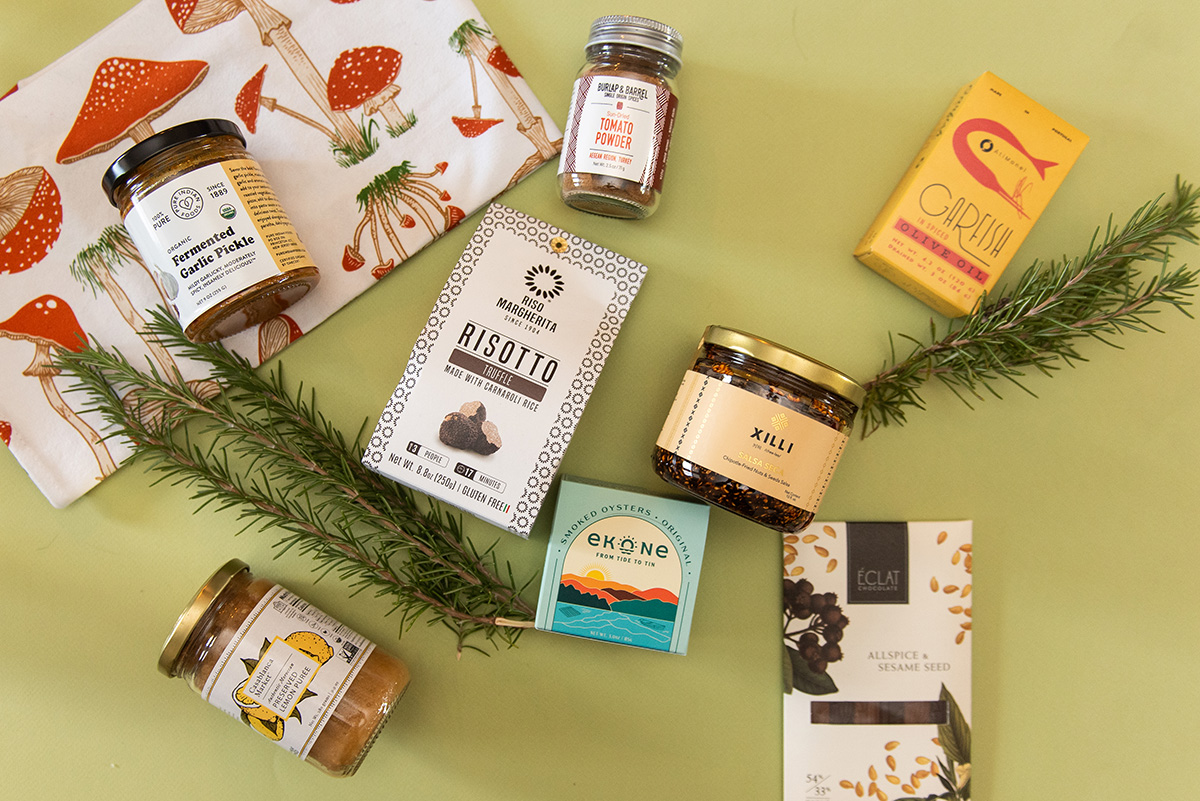
To give a touch of sweetness: The DC Landmark Chocolate Covered Oreo Holiday Cookies from Capital Candy Jar. Wrapped in a festive red bow, this box of nine cookies embraces love for Washington and the holiday season in one. Among the dark and milk chocolate covered cookies are images of the U.S. Capitol, the White House, the Lincoln Memorial, the Jefferson Memorial and festive hollies. The treat, packaged in a Hill East facility just a few blocks from the Capitol, is available for purchase online and at the DowntownDC Holiday Market. ($23.95)
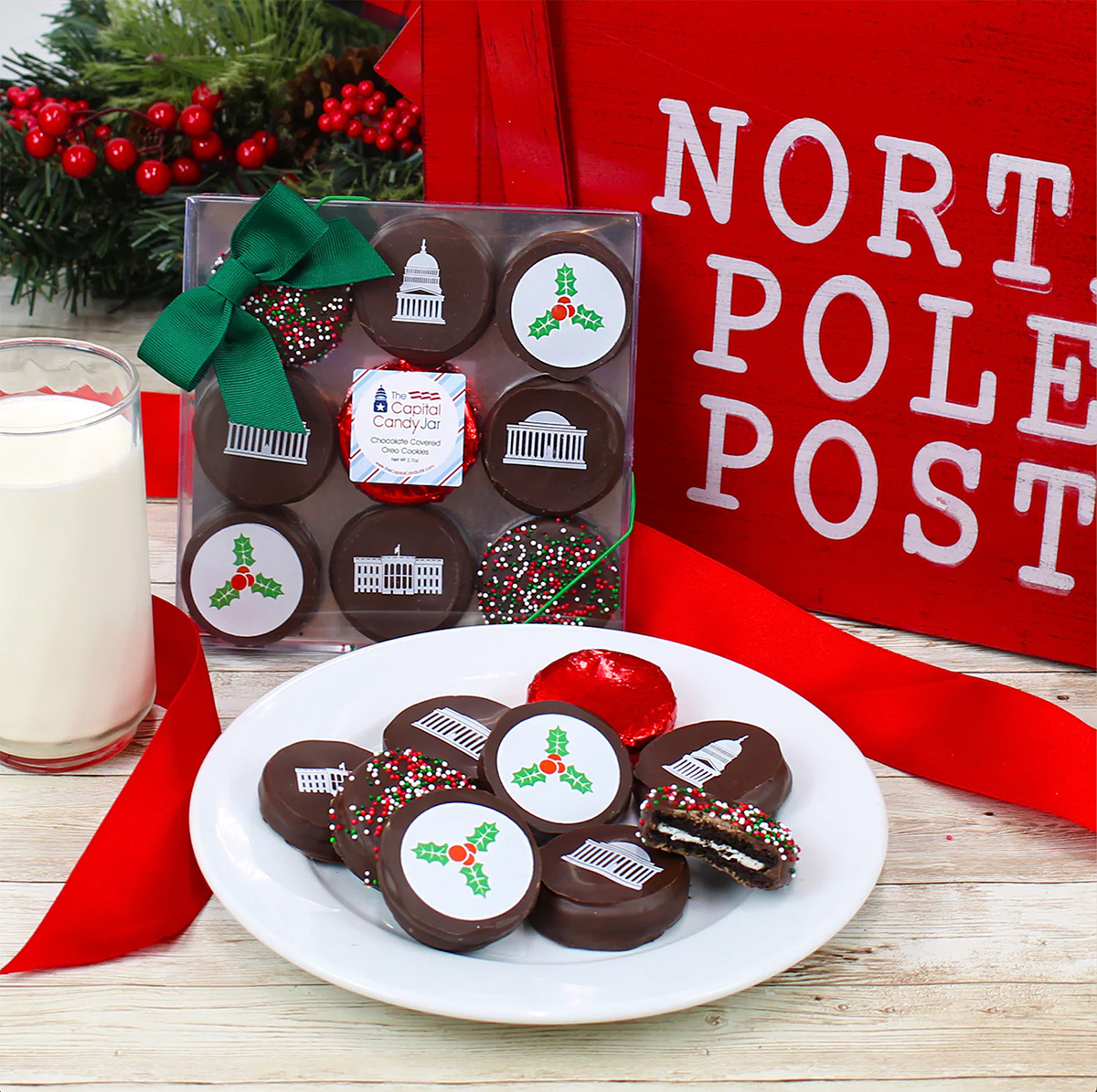
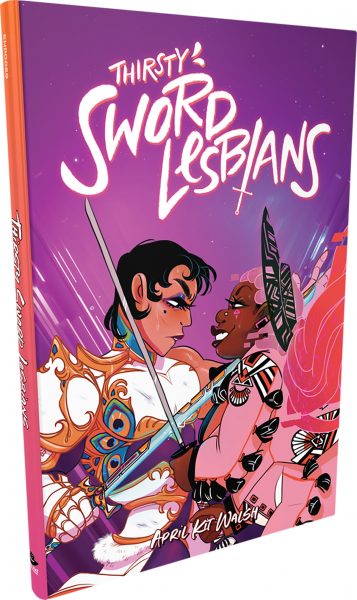
To celebrate queer gaming: Thirsty Sword Lesbians from Labyrinth Games & Puzzles. This roleplaying game embraces lesbian culture by unlocking a world of swords, romance, and battle. Ideal for group settings, the book presents a system of world building and character identities that are best brought to life by creative minds. Labyrinth, which has been a local Washington business for more than 15 years, celebrates non-digital fun through games and puzzles that connect the community. This gift is offered online and at Labyrinth’s Capitol Hill location. ($29.99)
To make a bold statement: The “Resist” T-shirt from Propper Topper. This locally screen-printed black tee features the Washington flag designed within a raised fist, symbolizing both Washington pride, and political resistance. The shirt is made exclusively by Propper Topper, a local Washington business that evolved from a hat shop to a gift store since opening in 1990. The tri-blend unisex shirt is available both for pickup at Propper Topper’s Cathedral Heights location and shipping via the online site. ($32)
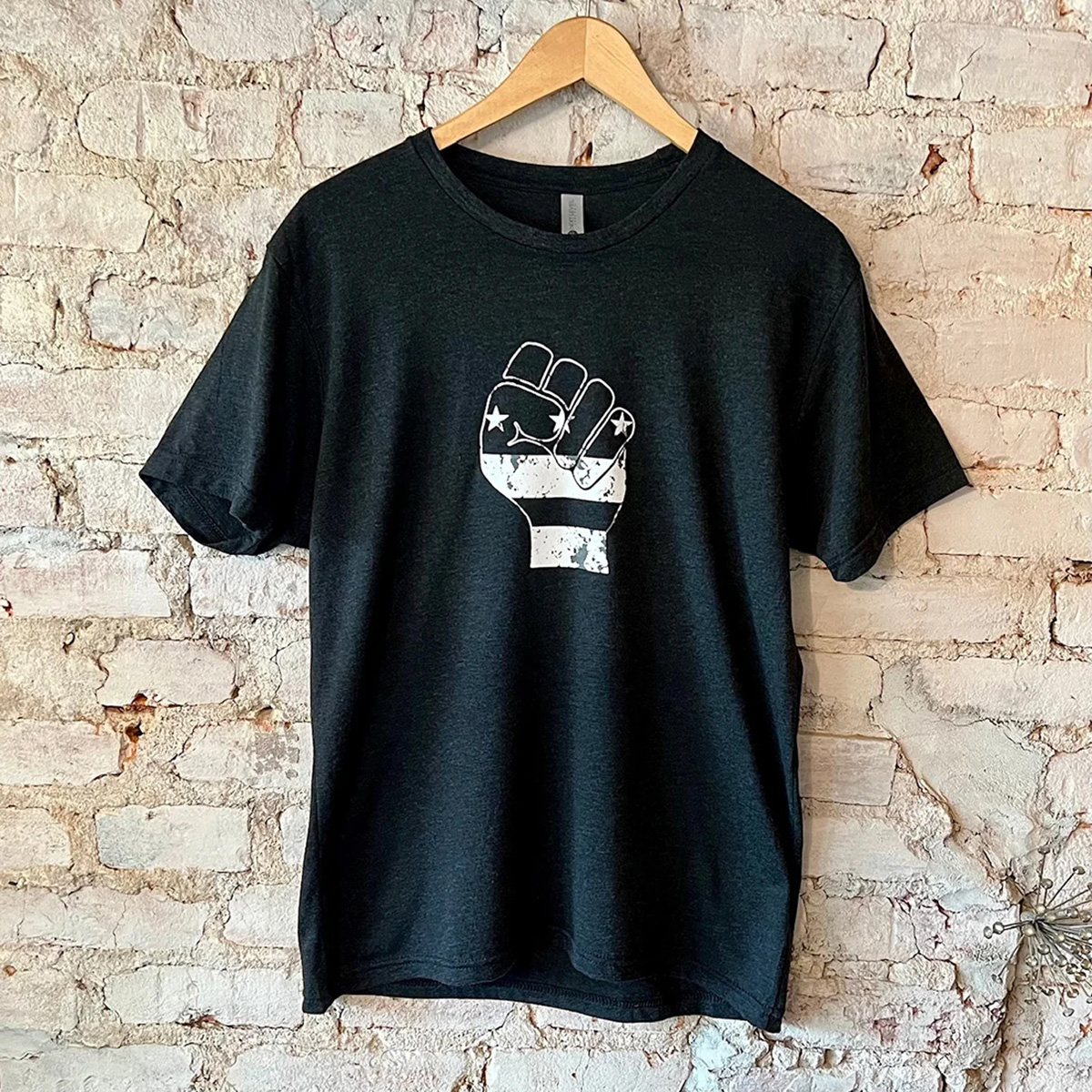
To keep it c(g)lassy: The Glass Ball earrings from Blue Moon Aquarius. Gifting can rarely go wrong when it comes to a new pair of earrings. The unique statement earrings — made of polymer clay, glass, and 18k gold plating over surgical steel — are hand cut, sanded and assembled in Washington, meaning each set is unique. Blue Moon Aquarius, a local brand, is known for its small batch jewelry and home decor designed with clay materials. Available in oxblood, hunter green, lavender, and bluestone color palettes, these earrings are available for purchase on Blue Moon Aquarius’ website and at the DowntownDC Holiday Market. ($48)
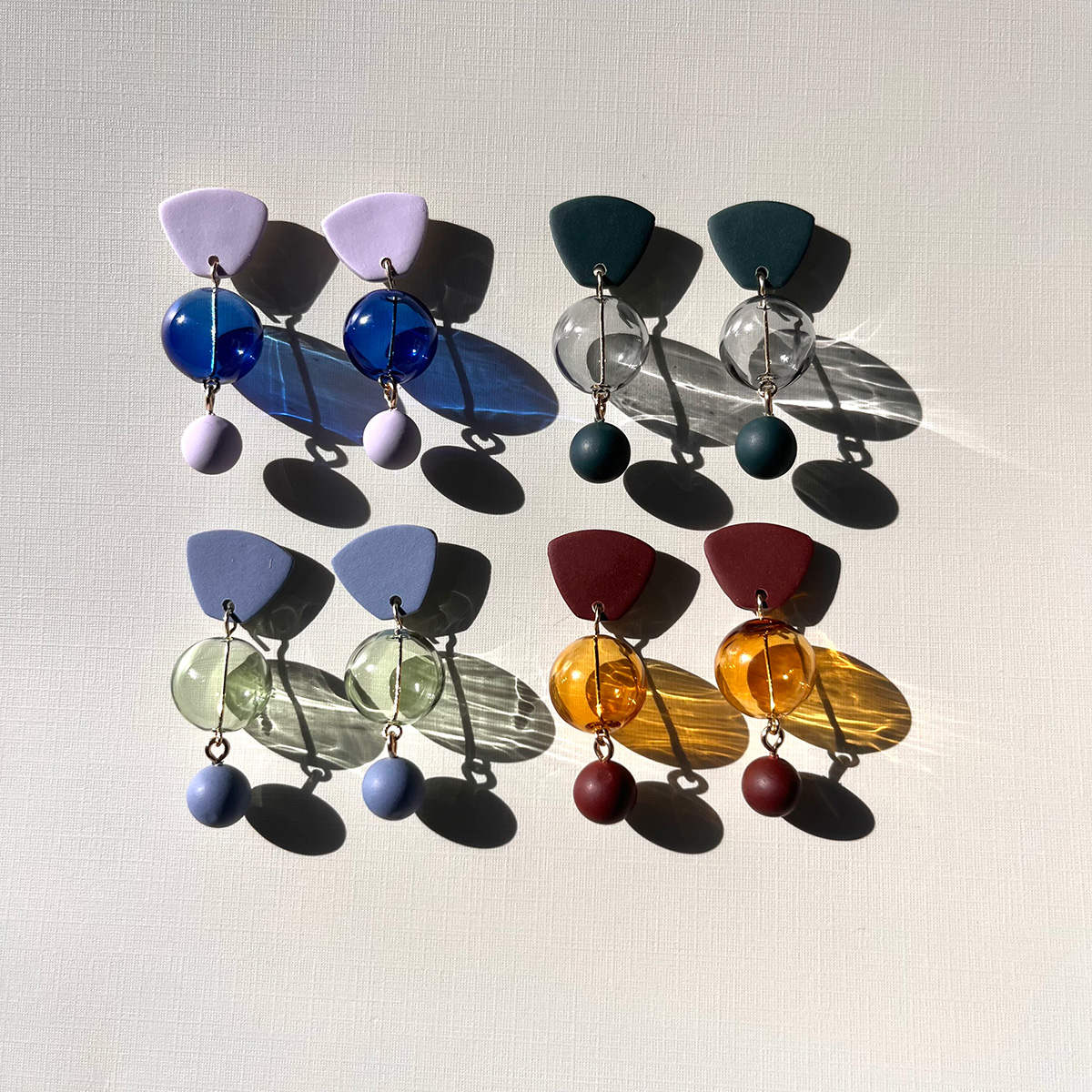
To elevate a holiday tea or charcuterie party: The Honey Flight: Tea Lover’s Selection from BannerBee. This local honey company presents the ideal gift to make cozying up with a cup of tea slightly more special. The Honey Flight contains three types of raw wildflower honey infused with fair trade Ugandan vanilla bean, chai spices, and locally sourced lemon thyme herb. The gift is also an opportunity to uplift a family company based in the Mid-Atlantic that offers all-natural, sustainable products. The flight is available online, at the DowntownDC Holiday Market or at the Arlington Courthouse and Dupont Farmers’ Markets. ($36)

For Baltimore shoppers: If you’re in Charm City, don’t miss Balston Mercantile, opened by a gay couple in June. Their gorgeous shop in the Hampden neighborhood offers an array of unique, upscale finds, from barware and artwork to cookbooks and home decor and more. (849 W. 36th St.)
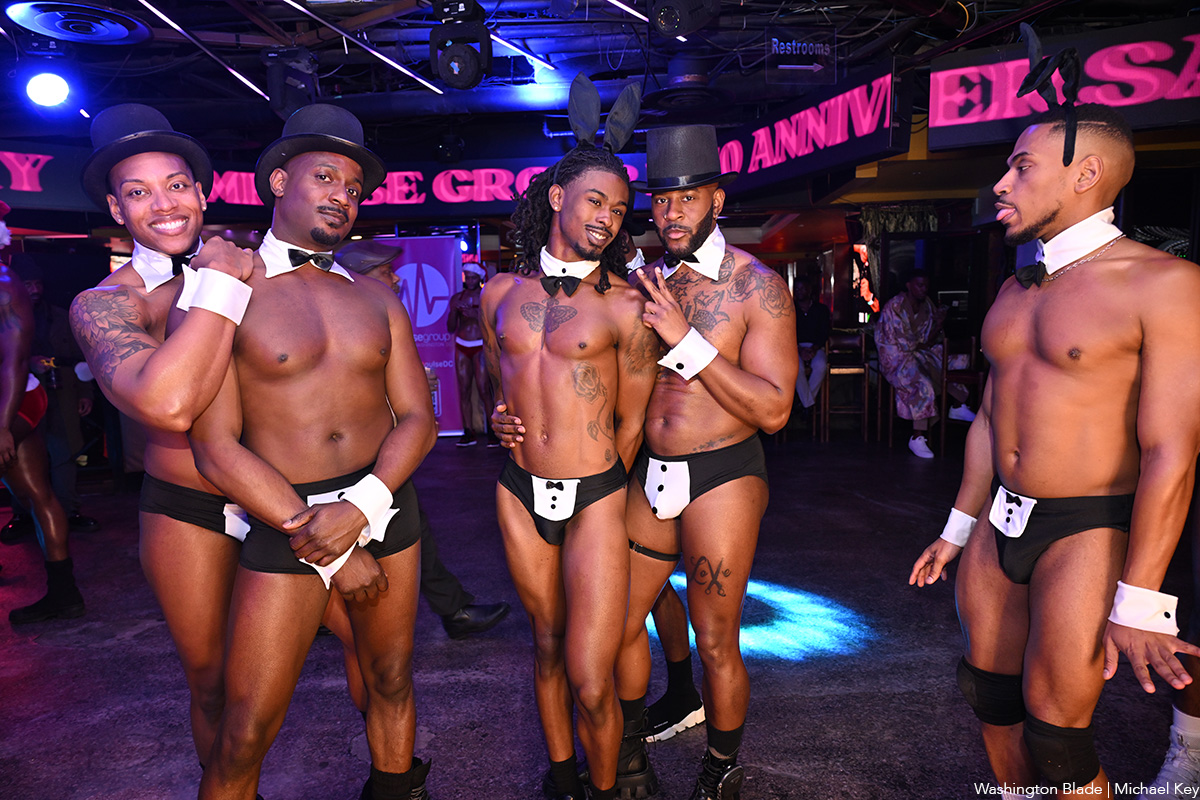
Impulse Group DC held “10’s Across the Board: A Celebration of 10 Years” at Bravo Bravo (1001 Connecticut Ave., N.W.) on Sunday, Dec. 14. Impulse Group DC is a volunteer-led 501(c)(3) and affinity group of AIDS Healthcare Foundation dedicated “to engaging, supporting, and connecting gay men” through culturally relevant health and advocacy work.
(Washington Blade photos by Michael Key)

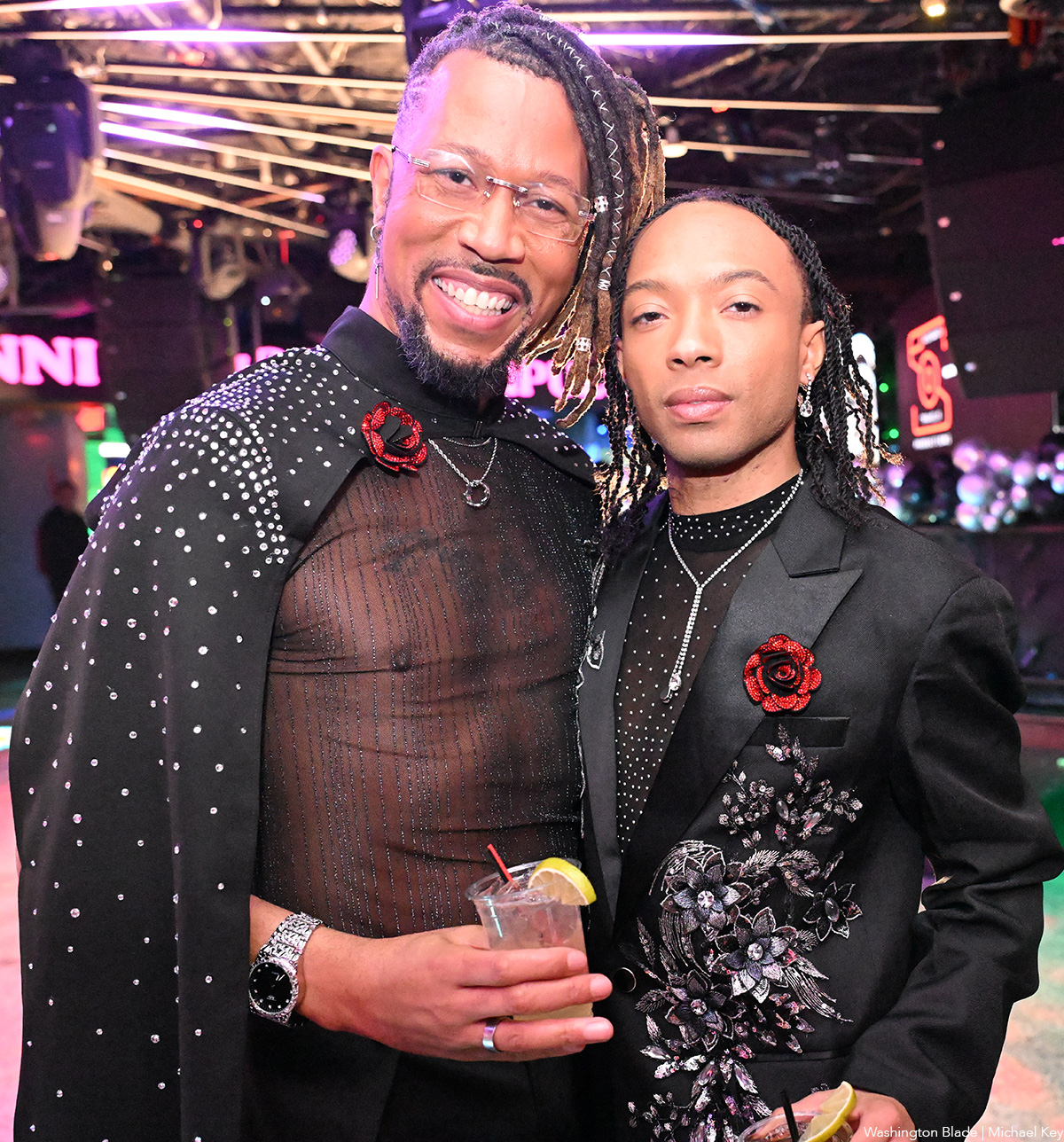
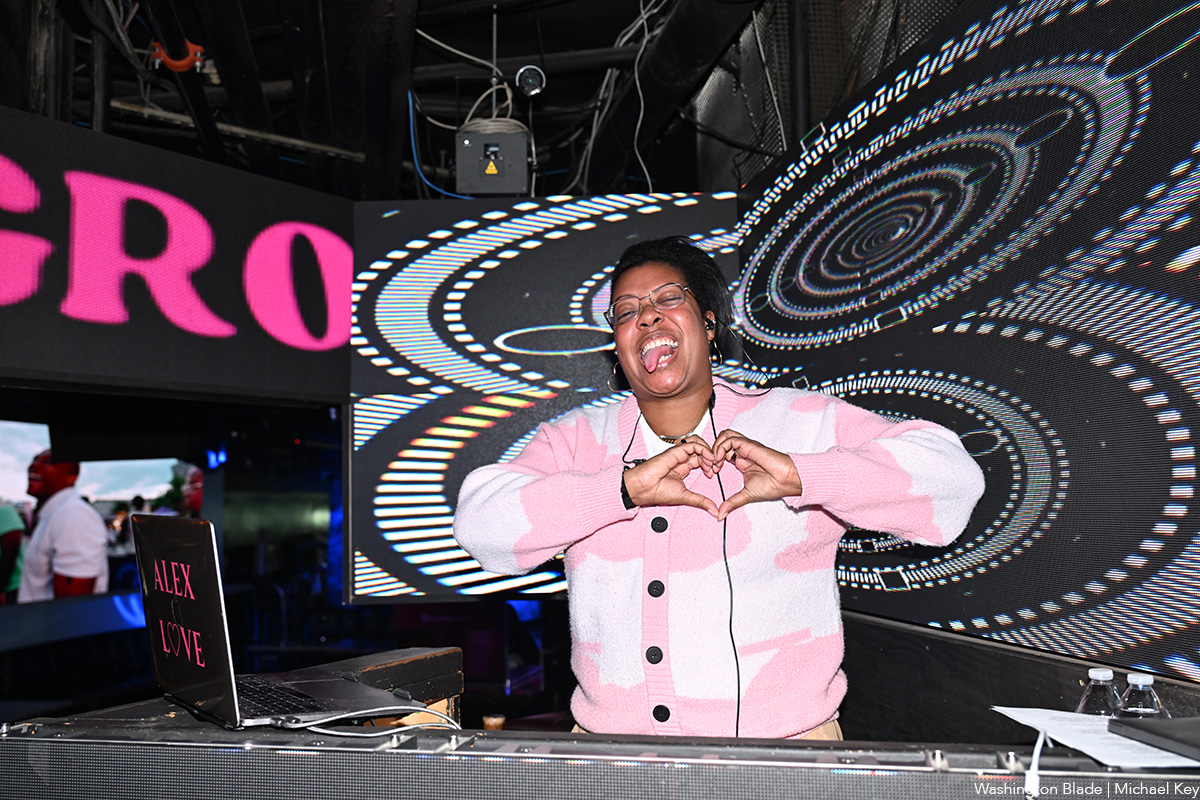
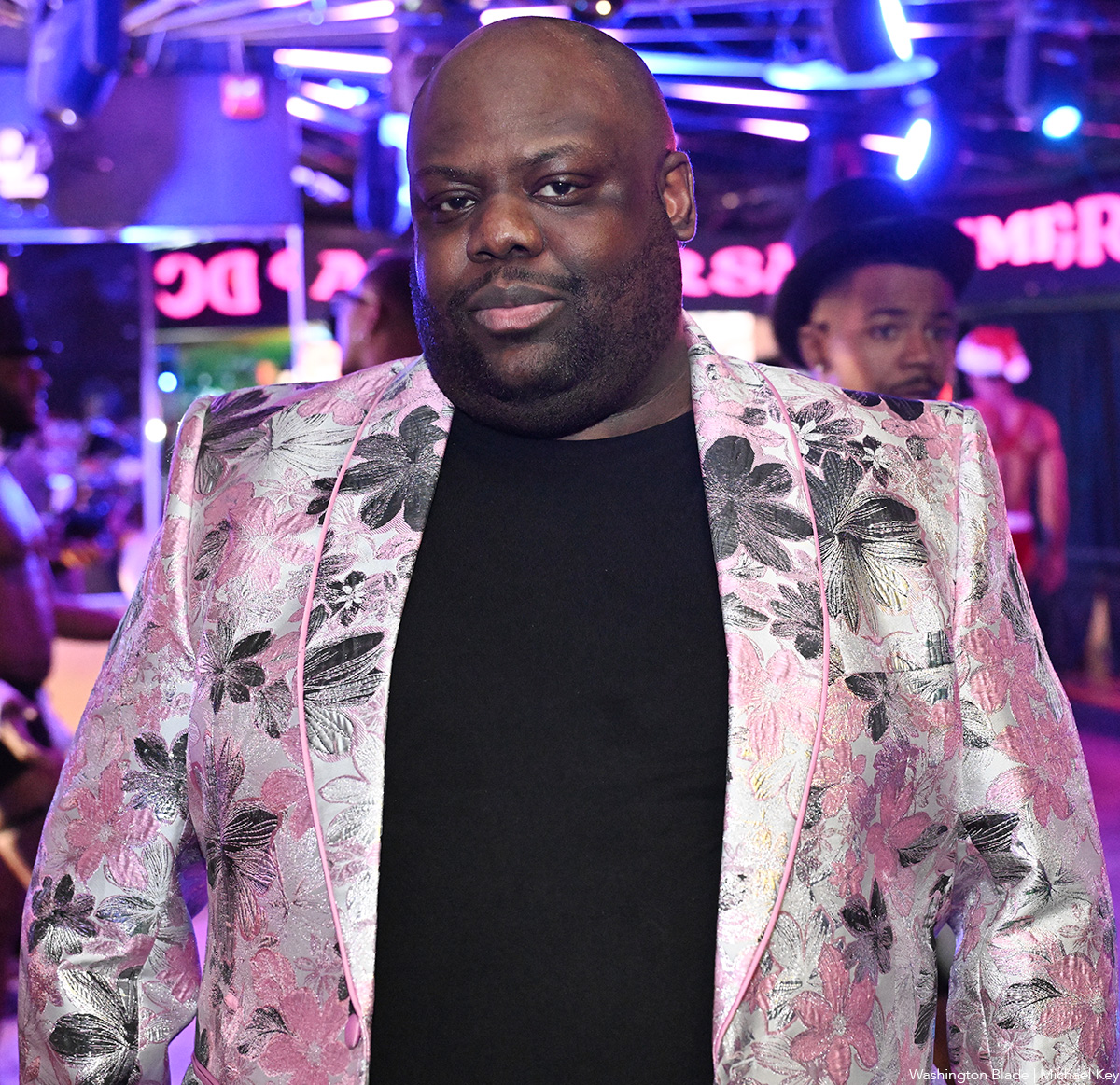
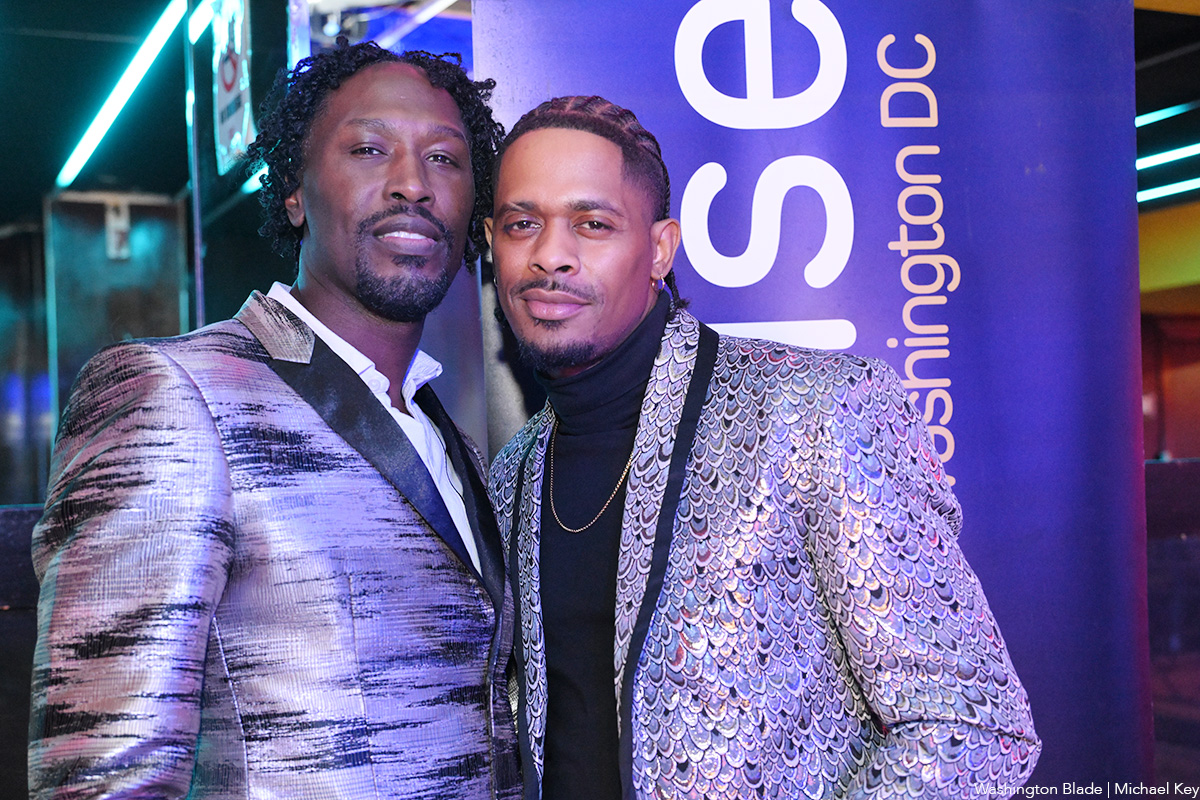
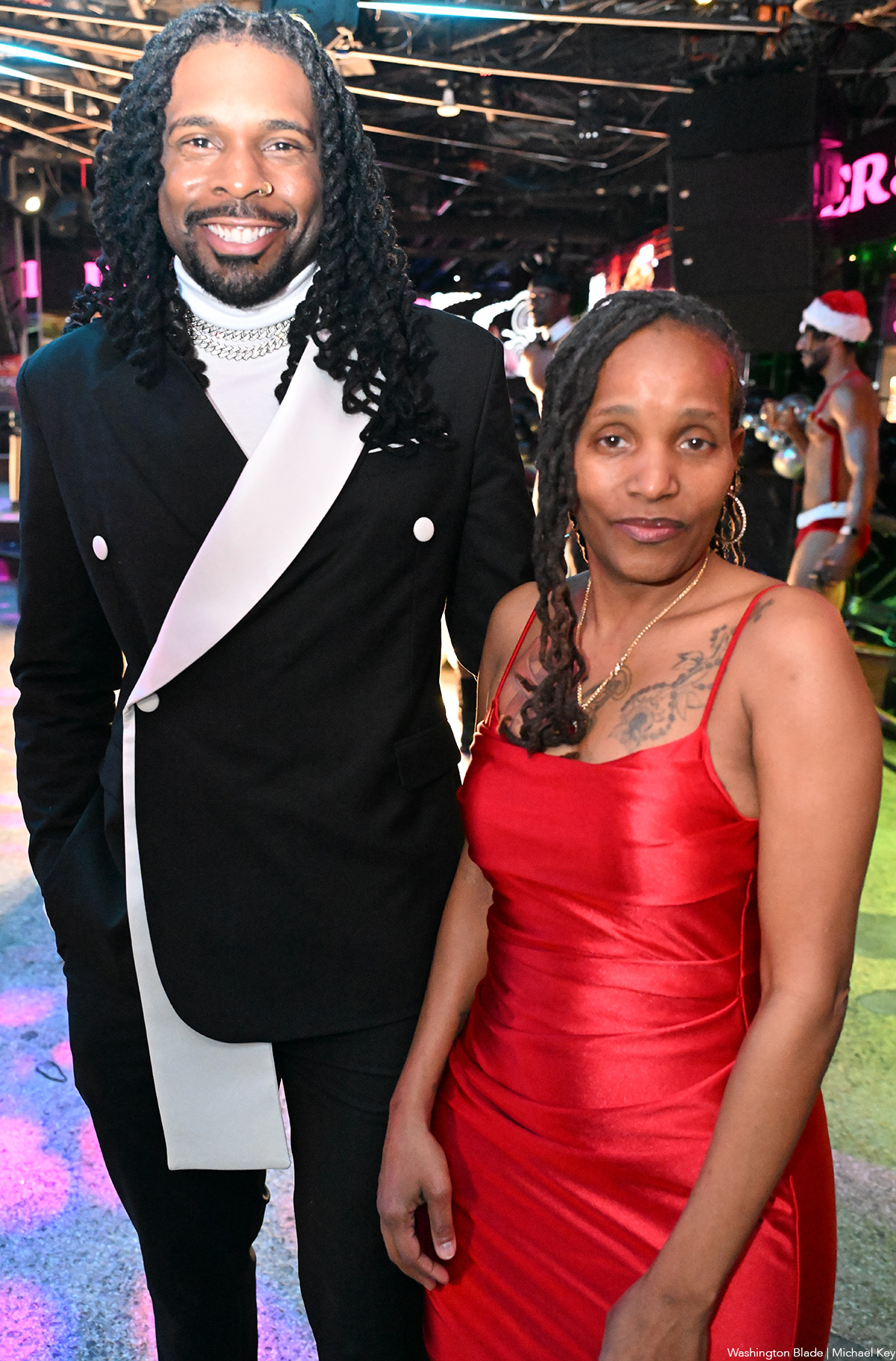
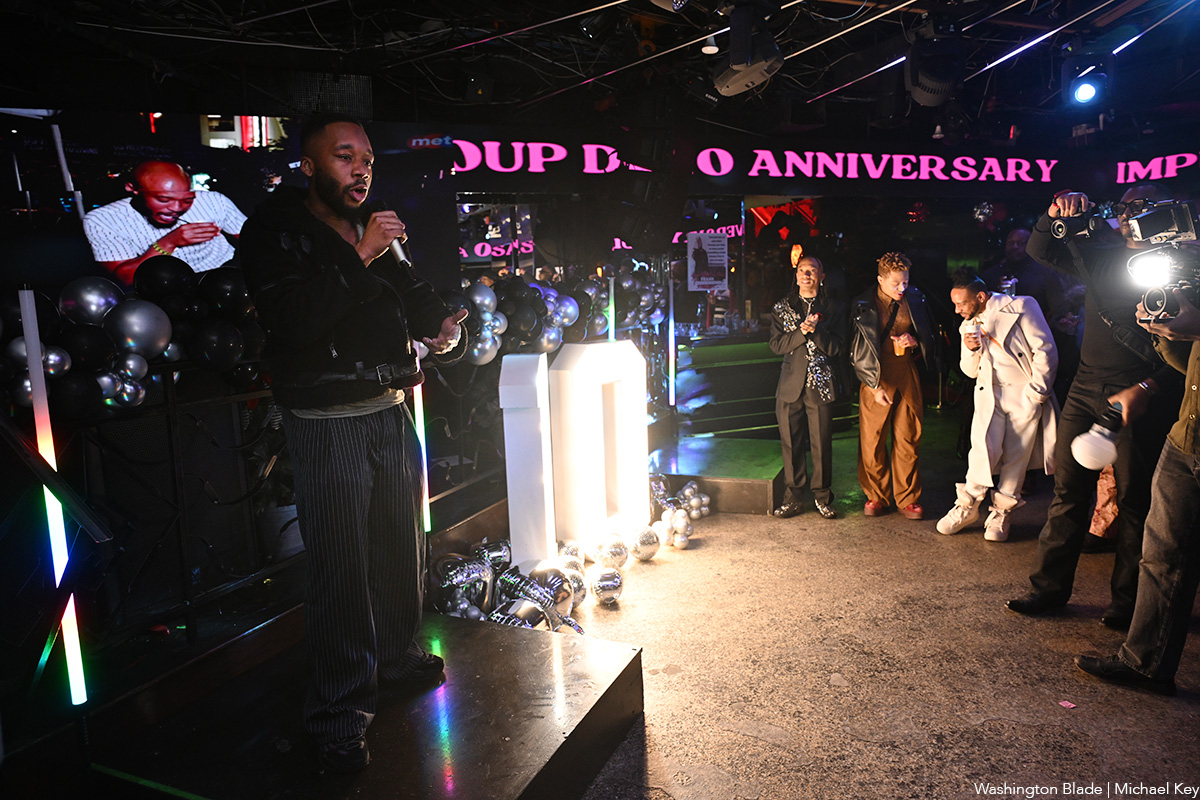
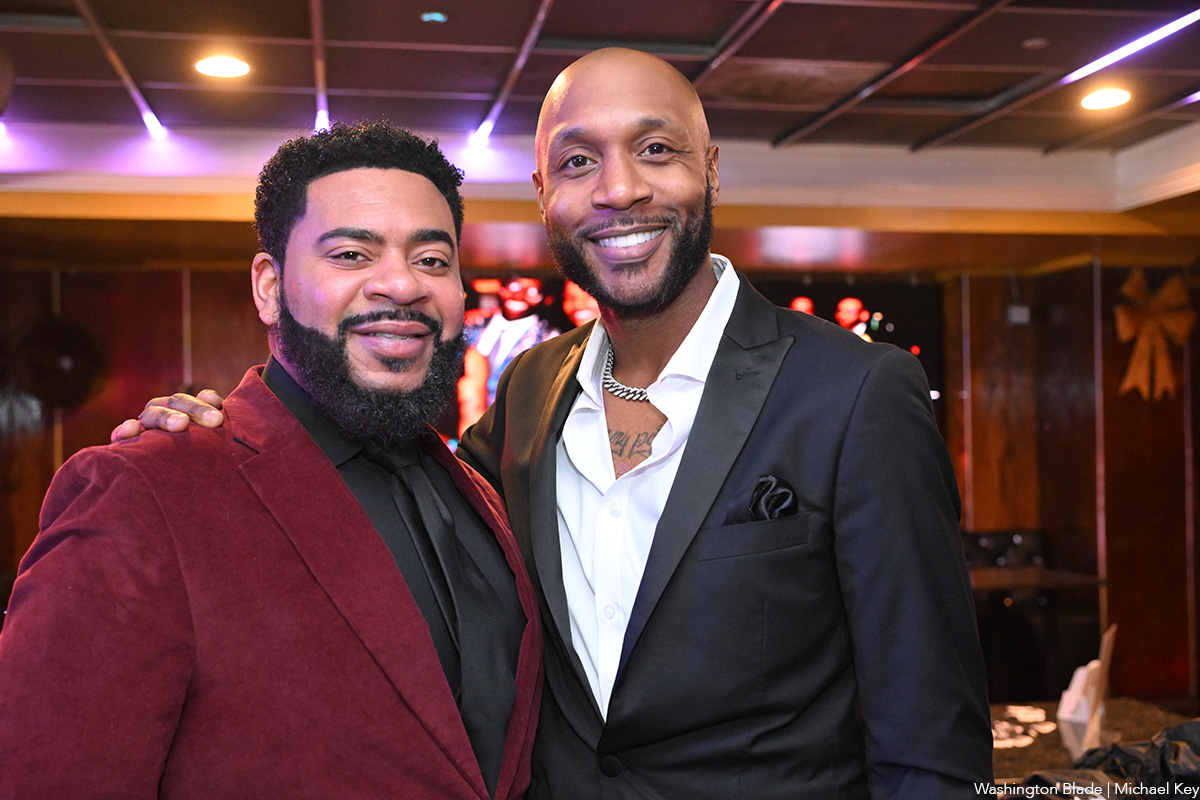
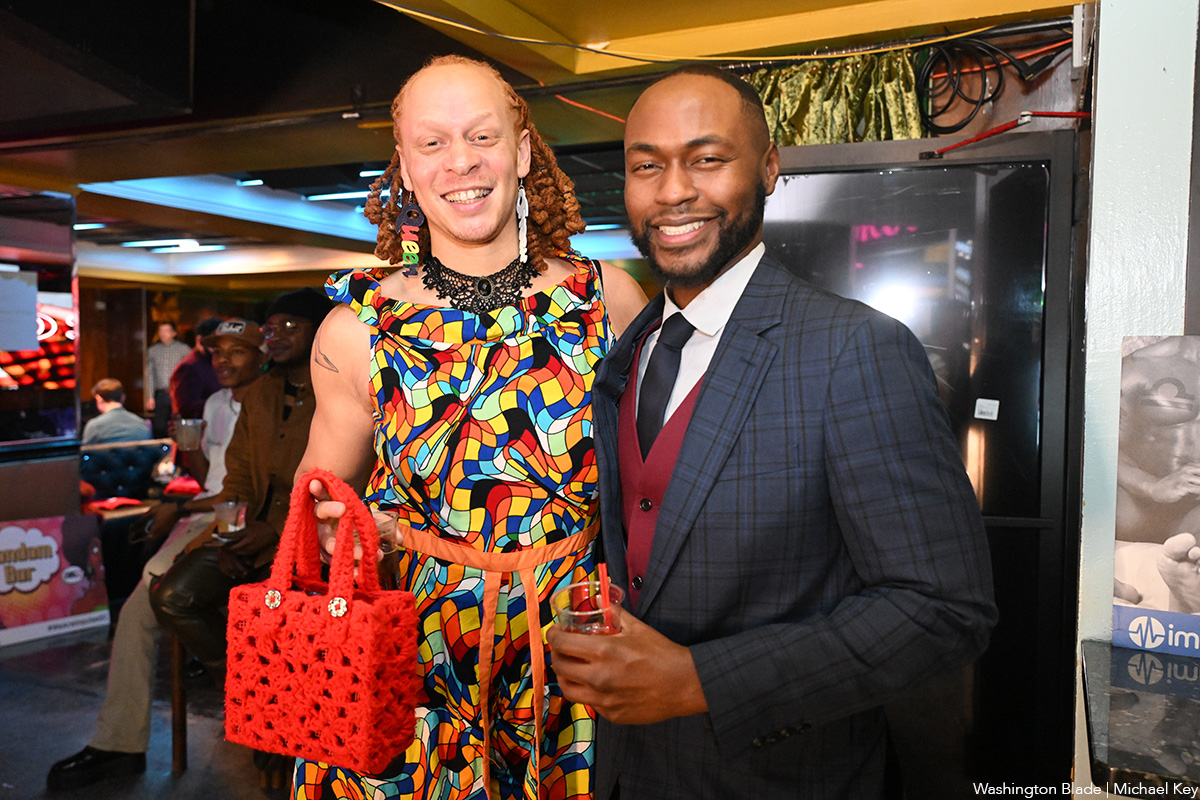
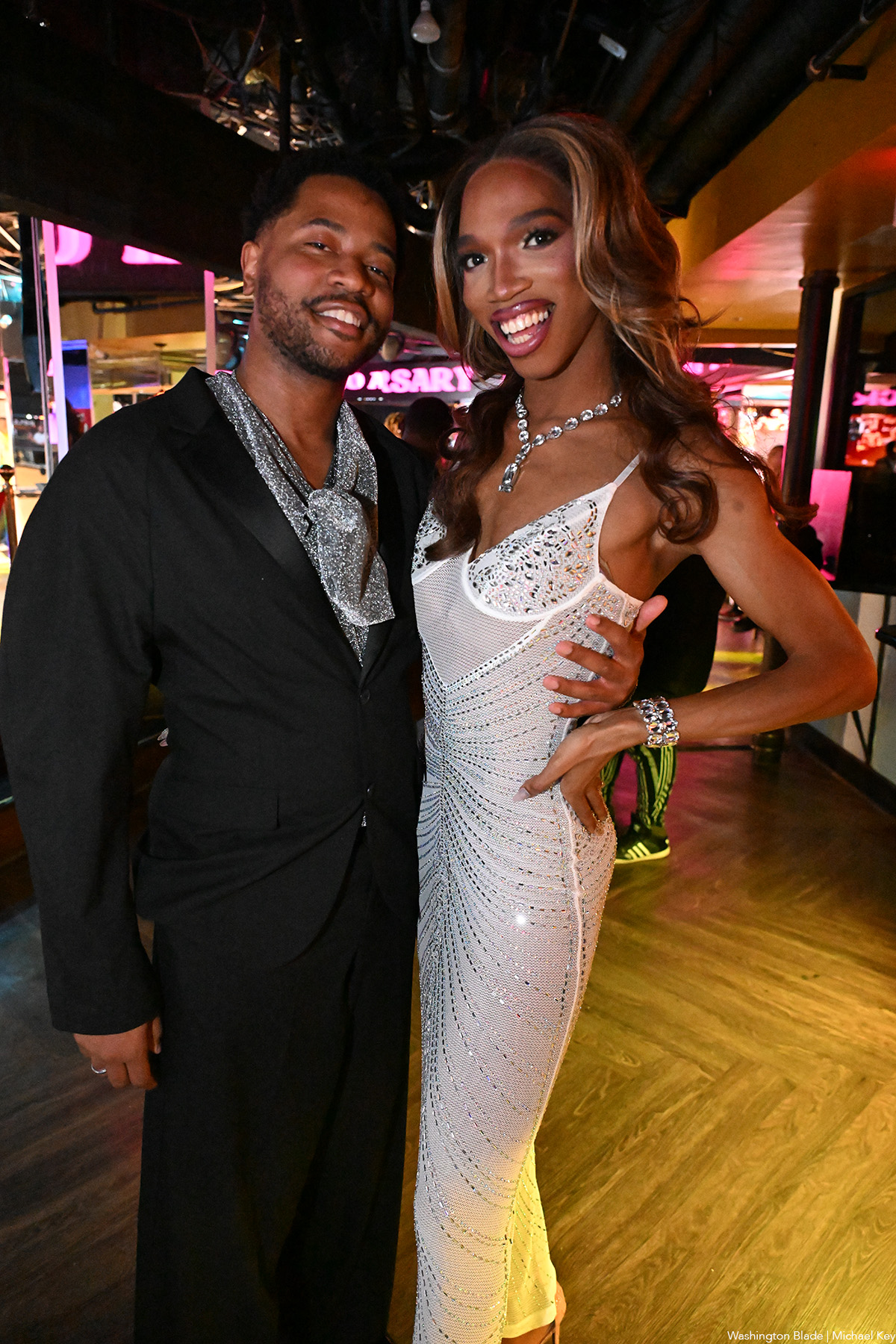
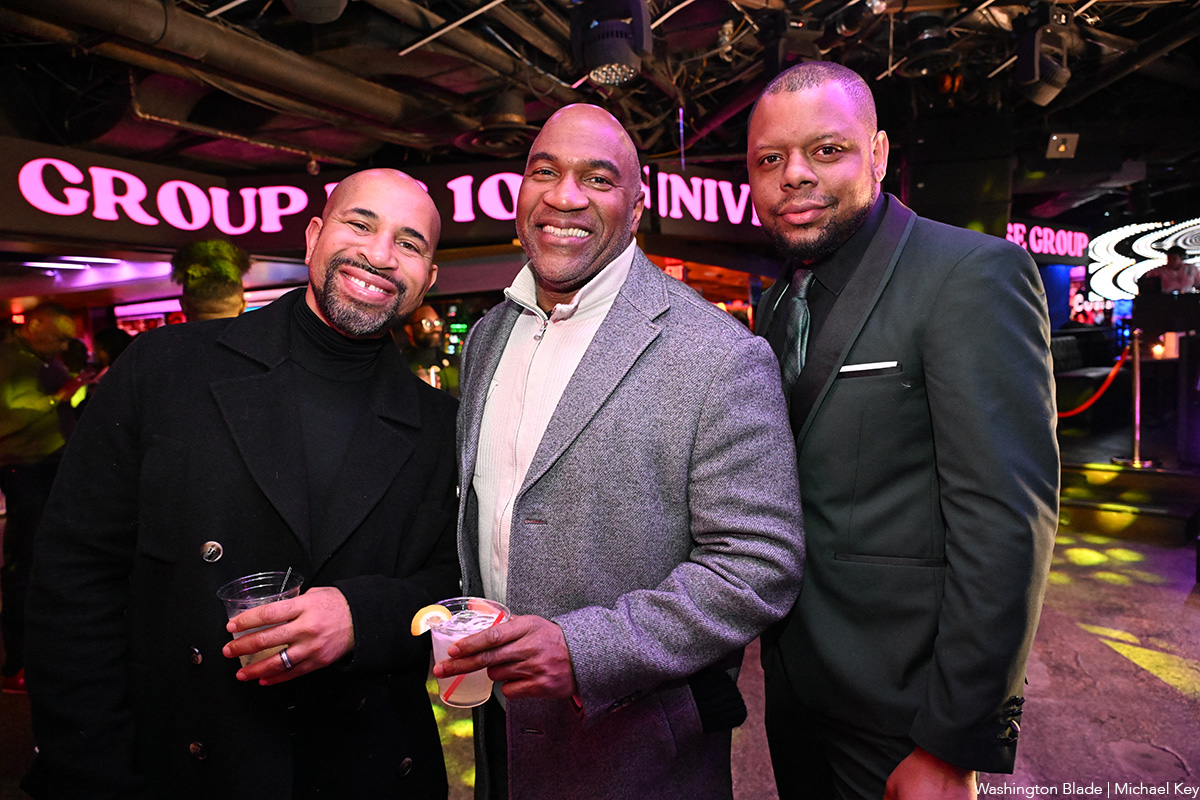
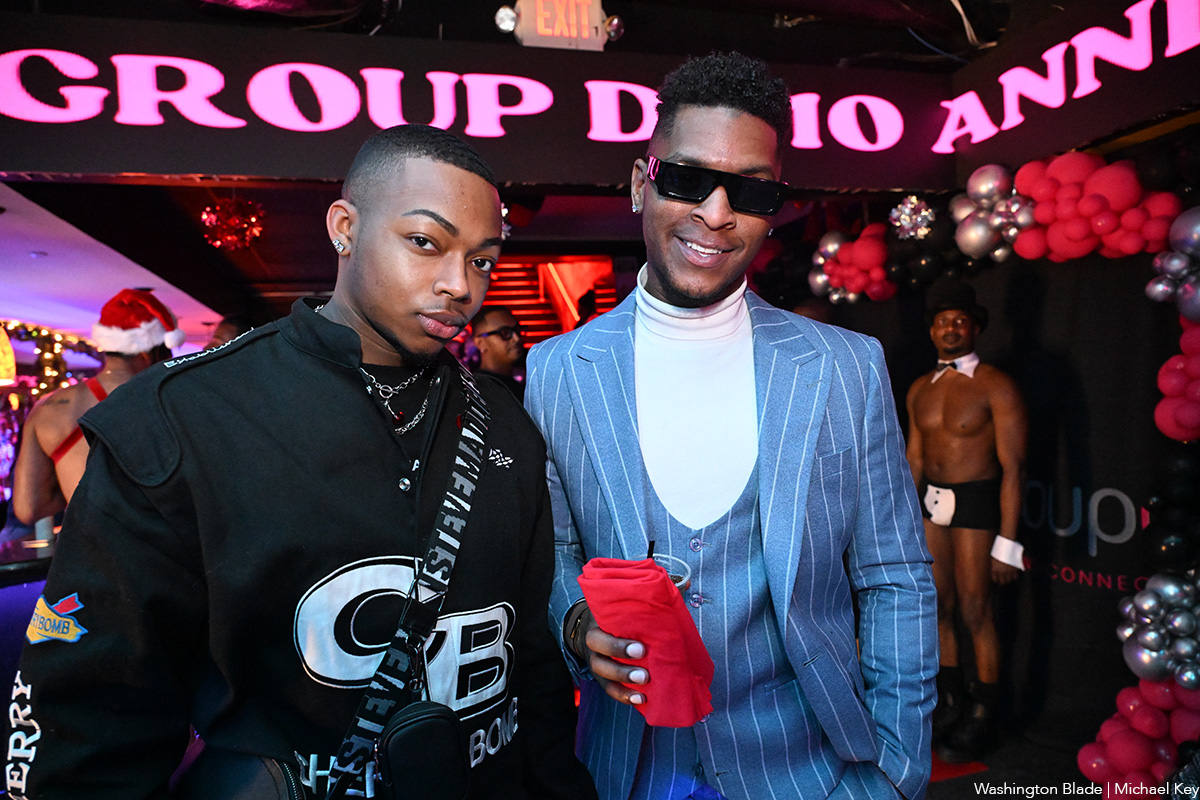
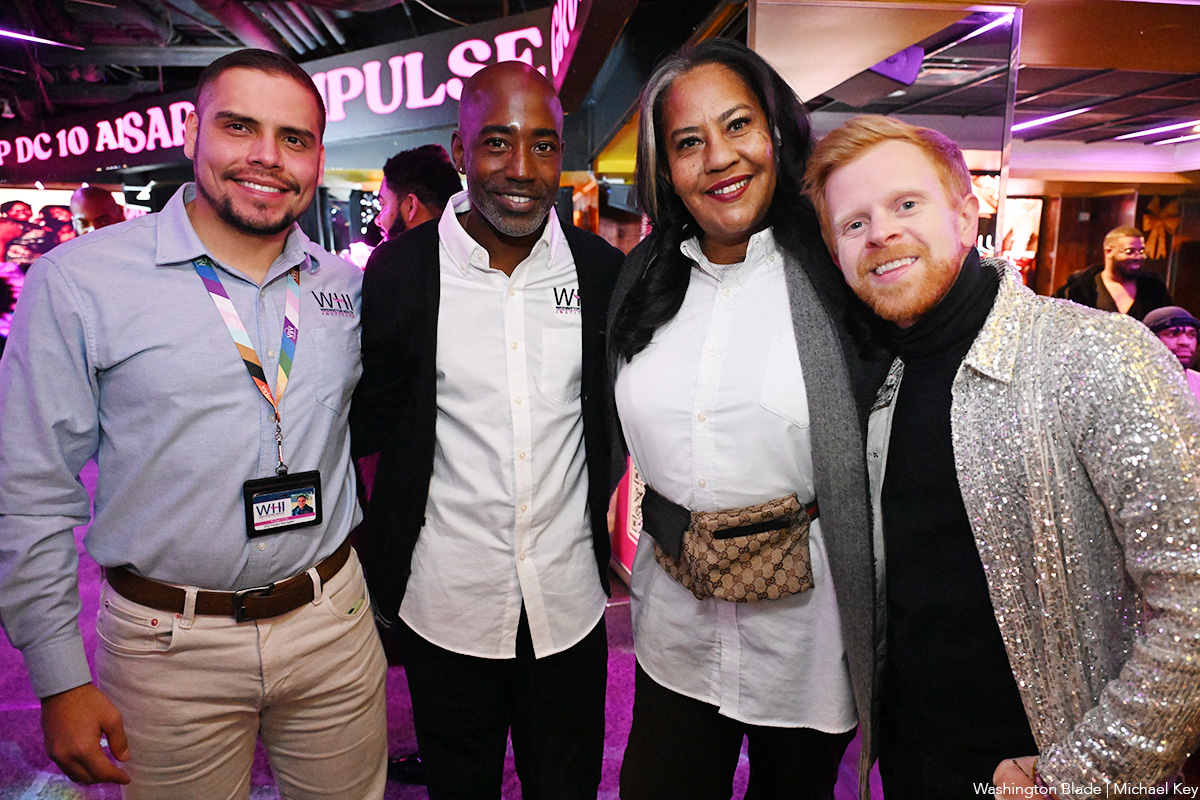

Rob Reiner, most known for directing untouchable classics like “The Princess Bride,” “Misery,” “When Harry Met Sally…,” and “Stand by Me,” died Dec. 14 alongside his wife, Michele Singer Reiner, in their Los Angeles residence. While investigations are actively underway, sources have told PEOPLE Magazine that the pair’s son, Nick Reiner, killed his parents and has been taken into custody.
Reiner was a master of every genre, from the romantic comedy to the psychological thriller to the coming-of-age buddy movie. But in addition to his renowned work that made him a household name, Reiner is also remembered as a true advocate for the LGBTQ community. In 2009, Reiner and his wife co-founded the American Foundation for Equal Rights, helping fight against California’s Prop 8 same-sex marriage ban. They were honored at the 2015 Human Rights Campaign Las Vegas Gala.
In a statement, HRC President Kelley Robinson said: “The entire HRC family is devastated by the loss of Rob and Michele Reiner. Rob is nothing short of a legend — his television shows and films are a part of our American history and will continue to bring joy to millions of people across the world. Yet for all his accomplishments in Hollywood, Rob and Michele will most be remembered for their gigantic hearts, and their fierce support for the causes they believed in — including LGBTQ+ equality. So many in our movement remember how Rob and Michele organized their peers, brought strategists and lawyers together, and helped power landmark Supreme Court decisions that made marriage equality the law of the land — and they remained committed to the cause until their final days. The world is a darker place this morning without Rob and Michele — may they rest in power.”
Reiner’s frequent collaborators have also spoken out as the industry is in mourning, including figures like Ron Howard and John Cusack.
A joint statement from Jamie Lee Curtis and Christopher Guest (who starred in Reiner’s “This is Spinal Tap”) reads: “Christopher and I are numb and sad and shocked about the violent, tragic deaths of our dear friends Rob and Michele Singer Reiner and our ONLY focus and care right now is for their children and immediate families and we will offer all support possible to help them. There will be plenty of time later to discuss the creative lives we shared and the great political and social impact they both had on the entertainment industry, early childhood development, the fight for gay marriage, and their global care for a world in crisis. We have lost great friends. Please give us time to grieve.”
While attending the 2019 HRC Los Angeles Dinner, Reiner spoke out about the need for equality: “We have to move past singling out transgender, LGBTQ, black, white, Jewish, Muslim, Latino. We have to get way past that and start accepting the idea that we’re all human beings. We’re all human beings, we all share the same planet, and we should all have the same rights, period. It’s no more complicated than that.”


